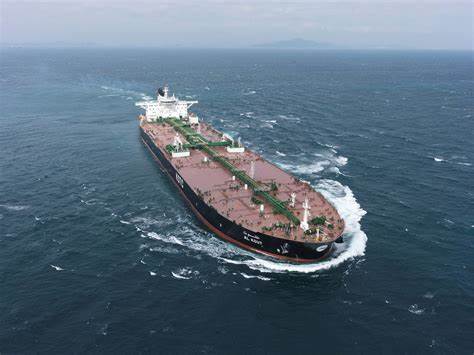
Impacts to trade flows seen from geopolitical fallout of Russia's invasion of Ukraine are expected to have long-lasting bullish effects in the tanker market, tanker owner International Seaways said May 4.
“We anticipate permanent changes to oil movements and trade patterns related to Russia's invasion of the Ukraine,” CEO Lois Zabrocky said in the company's first-quarter 2021 earnings call.
The biggest change has been seen in the shift of crude exports from Russia to Asian destinations as opposed to the typical heavier volumes seen of Russian exports to Europe. This new dynamic has evolved as many trading parties in the West have been impacted by country-enforced sanctions or have decided to self-sanction dealings with Russian entities.
“We have seen [crude movements to Asia from Russia] increase by 27% in the months immediately following the invasion compared to January,” Zabrocky said. “At the same time, we have seen a 17% increase in crude oil exports from key Atlantic basin producers such as the United States, West Africa and Brazil to Europe.”
All of these movements, Zabrocky emphasized, aid in the increase of ton-mile demand for the dirty tanker market.
Proposed phaseout of Russian oil imports in EU
Also, Zabrocky pointed to the increased likelihood of a permanent trade dynamic shift after the EU announced earlier in the day May 4 its target to phase out Russian oil imports by the end of 2022.
Freight rates have spiked since Feb. 24, the day Russia invaded Ukraine, as Europe looked to replace Russian crude barrels. The benchmark 70,000 mt US Gulf Coast-UK Continent Aframax run, which heavily represents the cost of transporting US-origin crude to European destinations currently sits 20.8% above freight Feb. 23, after seeing freight reach levels as high as 77.4% above pre-invasion levels April 7-11. The 70,000 mt USGC-UKC run was last assessed May 3 at w160, or $29.95/mt.
The Forward Freight Agreement, or FFA, market has reflected the bullish sentiment, with the May contract for the 70,000 mt USGC-UKC run last assessed May 3 at $30.3264/mt, or w162, up from the average freight for May at $13.33/mt. June shows a similar pattern, with the contract assessed May 3 at $31.2624/mt, or w167, up from the June 2021 average of $11.99/mt.
Adding fuel to the US export fire, roughly half of the historical release from the US strategic petroleum reserves of 1 million b/d is expected to head to Europe, Zabrocky said.
Midsize crude tankers loading in the USGC have seen the majority of export business as a result of increased trans-Atlantic flows out of the USGC, creating an environment for intertrade between the Suezmaxes and Aframaxes, which has subsequently put a cap on rates as charterers shift to the more economically favorable tanker size.
“We are going to continue to see this situation evolve, certainly until the war ends and I think beyond because the conversation has shifted to energy security beyond just energy transition,” Zabrocky said.
All other arrows are also pointing upward for the dirty tanker market as a whole, International Seaways showed in its presentation. Global oil demand is expected to increase by 2.6 million in 2022, with third-quarter increases expected to drive the year's growth, according to S&P Global.
VLCC segment seeks alternative flows
The Americas Very Large Crude Carrier, or VLCC, segment has seen less benefit from the misplacement of Russian crude barrels, with freight for the benchmark 270,000 mt USGC-China run sitting just 12.5% above levels seen before the invasion, with less signs of further freight firming on the horizon.
The larger tonnaged ship is seeing more negative impacts from a resurgence of coronavirus-related lockdowns in major VLCC demand center China on top of below-target OPEC+ production levels.
OPEC+ is still on track to stick to production increases of 432,000 b/d per month, however S&P Global Analytics expects increases will be limited to 220,000 b/d in May and June.
“We need China, and it is looking like that even though we are under their ‘zero-tolerance’ policy and they have very strong restrictions now, that is looking like it should lift in the second half of May or heading into June but they are very effected and are seeing levels were last seen in April 2020,” Zabrocky said when asked about the recovery of the VLCC segment. “We really need for that to fall away and China to be there taking in barrels and that will really drive things.”
Source: Platts
The opinions expressed herein are the author's and not necessarily those of The Xinde Marine News.
Please Contact Us at:
media@xindemarine.com


 Ningbo Containerized Freight Index Weekly Commentar
Ningbo Containerized Freight Index Weekly Commentar  Ningbo Containerized Freight Index Weekly Commentar
Ningbo Containerized Freight Index Weekly Commentar  Ningbo Containerized Freight Index Weekly Commentar
Ningbo Containerized Freight Index Weekly Commentar  BIMCO Shipping Number of the Week: Bulker newbuildi
BIMCO Shipping Number of the Week: Bulker newbuildi  Ningbo Containerized Freight Index Weekly Commentar
Ningbo Containerized Freight Index Weekly Commentar  Ningbo Containerized Freight Index Weekly Commentar
Ningbo Containerized Freight Index Weekly Commentar